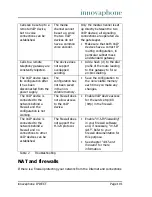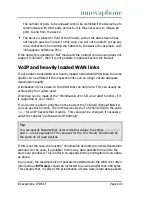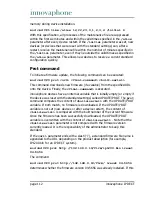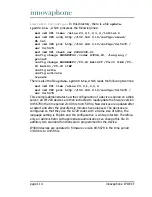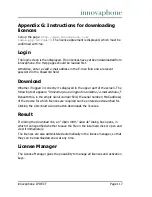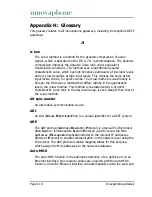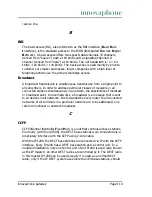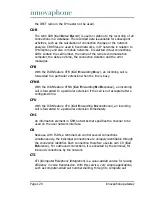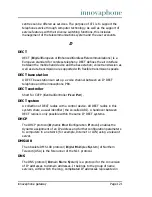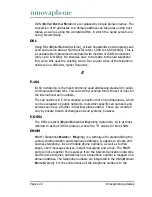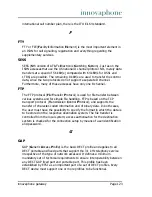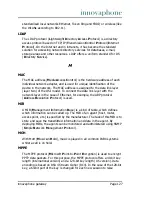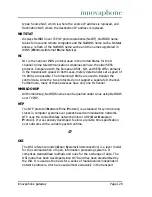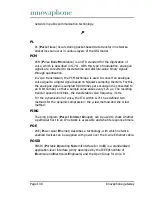
innovaphone IP DECT
Page 115
Appendix F: Configuration of an NTP server/
client
If a network does not have an NTP server, a public time server can be used. The
TU Berlin, for example, provides a time service at the IP address
130.149.17.21
. This service is a voluntary service, and no claims can be made
with regard to its availability.
Any Windows server can operate as the NTP server. Equally, there are various
NTP software packages for Windows and Unix/Linux platforms.
The innovaphone VoIP devices also work simultaneously as NTP servers. If
several devices are being used, one device can synchronise with a time server
(external if need be), and all other devices, in turn, can synchronise with this one
device.
The VoIP device will then operate as the time service and will transmit the correct
time to the other devices. The synchronisation of all devices with one external
time service should be avoided, since this results in unnecessary high loads on
these servers.
Further public time services can be found worldwide on the Internet at
http:/
/www.eecis.udel.edu/~mills/ntp/
.
Timezone strings (TZ string):
Time services always provide the coordinated world time UTC (
U
niversal
T
ime
C
oordinated), which corresponds to GMT (
G
reenwich
M
ean
T
ime), not however
the correct time zone and summer time. It is therefore possible to specify the
time difference between the time zone and the world time in the
String
field.
The difference from the time zone
GMT+1
(Central European time zone) is 60
minutes. A further 60 minutes has to be added with summer time, adding up to
a total difference of 120 minutes. In this case, however, you must adjust the time
difference manually when switching from winter to summer time and vice versa.
If a so-called timezone string was entered in the
String
field, the device can
make the switch from summer to winter time automatically. The name of the
time zone, the name of the summer time zone, their respective differences in
time compared to the UTC and the time switch points are encoded in this field.
There are various formats for the specification of this string. These formats are
defined by the IEEE POSIX standard.
POSIX timezone strings have the following format (optional parts in square

